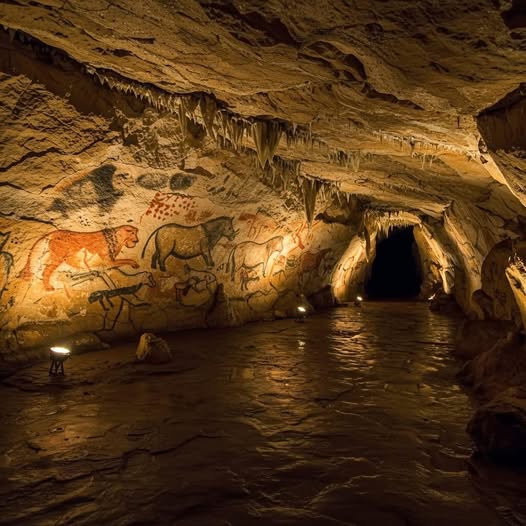
Sealed by a landslide for 21,000 years, the Chauvet Cave’s walls pulse with the oldest known paintings—lions, rhinos, and galloping horses frozen in torchlight. A time capsule from the Ice Age, untouched until 1994. Who else feels the whisper of Paleolithic genius? Artists scraped walls clean before painting and used torch flicker to make beasts appear to move—proto-cinema 30,000 years early!
In 1994, three French speleologists squeezed through a narrow cliffside tunnel near the Ardèche River—and stumbled into a cathedral of prehistoric art. The Chauvet Cave’s walls, preserved by a perfectly timed landslide around 19,000 BCE, bore over 400 animals painted with charcoal and ochre: stampeding woolly rhinos, dueling cave lions, even a 10-meter-long panel of horses flowing like a Paleolithic filmstrip.
Radiocarbon dating shocked the world: these were twice as old as Lascaux, painted when Neanderthals still roamed Europe. The artists used cave contours to create 3D effects (a bison’s head emerging from a rock bulge), and footprints of an 8-year-old child—perhaps an apprentice—remain fossilized in the clay.
